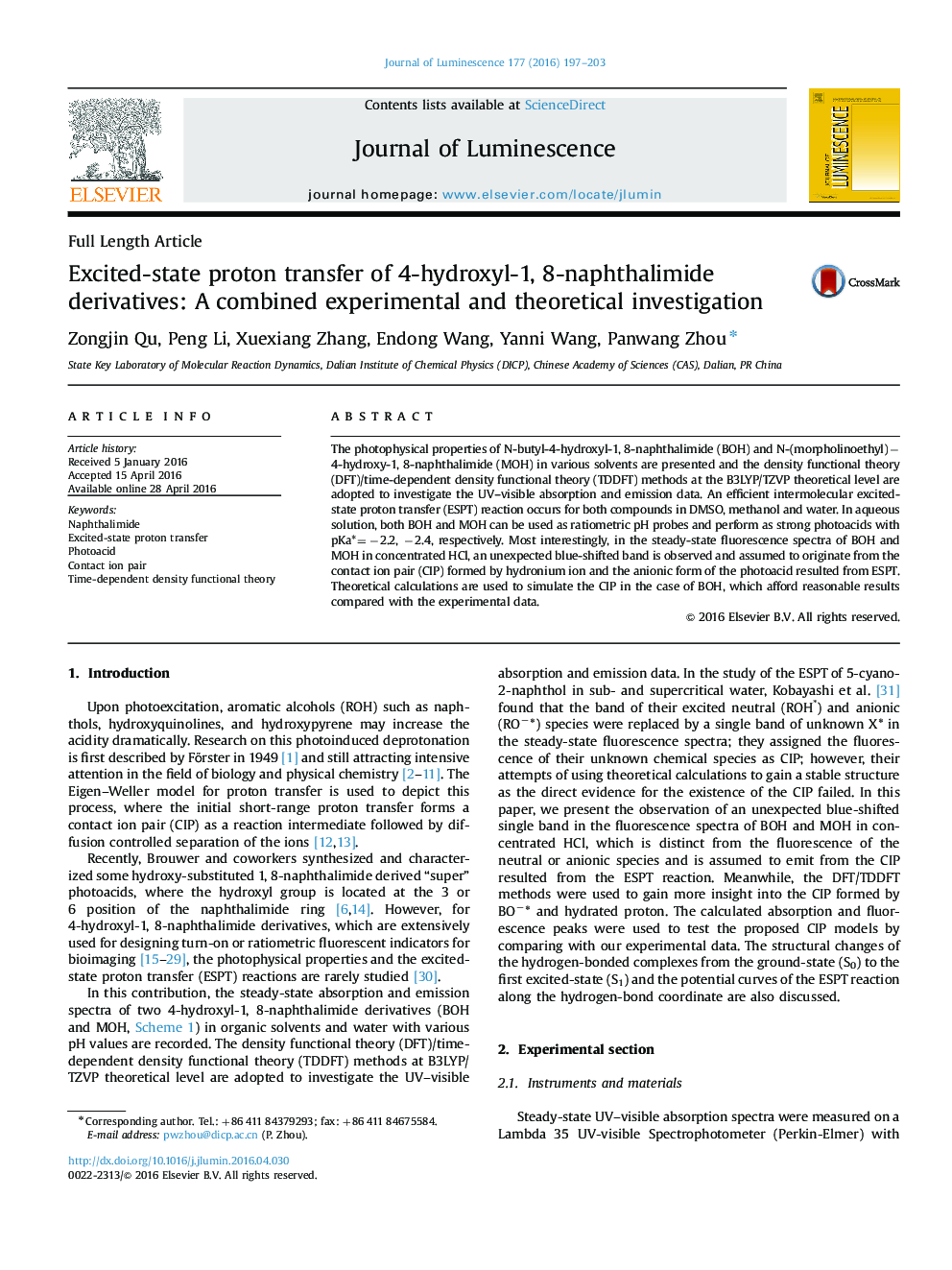| Article ID | Journal | Published Year | Pages | File Type |
|---|---|---|---|---|
| 5398573 | Journal of Luminescence | 2016 | 7 Pages |
Abstract
The photophysical properties of N-butyl-4-hydroxyl-1, 8-naphthalimide (BOH) and N-(morpholinoethyl)â4-hydroxy-1, 8-naphthalimide (MOH) in various solvents are presented and the density functional theory (DFT)/time-dependent density functional theory (TDDFT) methods at the B3LYP/TZVP theoretical level are adopted to investigate the UV-visible absorption and emission data. An efficient intermolecular excited-state proton transfer (ESPT) reaction occurs for both compounds in DMSO, methanol and water. In aqueous solution, both BOH and MOH can be used as ratiometric pH probes and perform as strong photoacids with pKa*=â2.2, â2.4, respectively. Most interestingly, in the steady-state fluorescence spectra of BOH and MOH in concentrated HCl, an unexpected blue-shifted band is observed and assumed to originate from the contact ion pair (CIP) formed by hydronium ion and the anionic form of the photoacid resulted from ESPT. Theoretical calculations are used to simulate the CIP in the case of BOH, which afford reasonable results compared with the experimental data.
Keywords
Related Topics
Physical Sciences and Engineering
Chemistry
Physical and Theoretical Chemistry
Authors
Zongjin Qu, Peng Li, Xuexiang Zhang, Endong Wang, Yanni Wang, Panwang Zhou,
